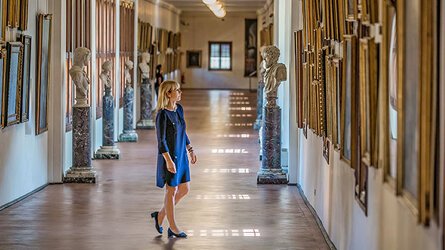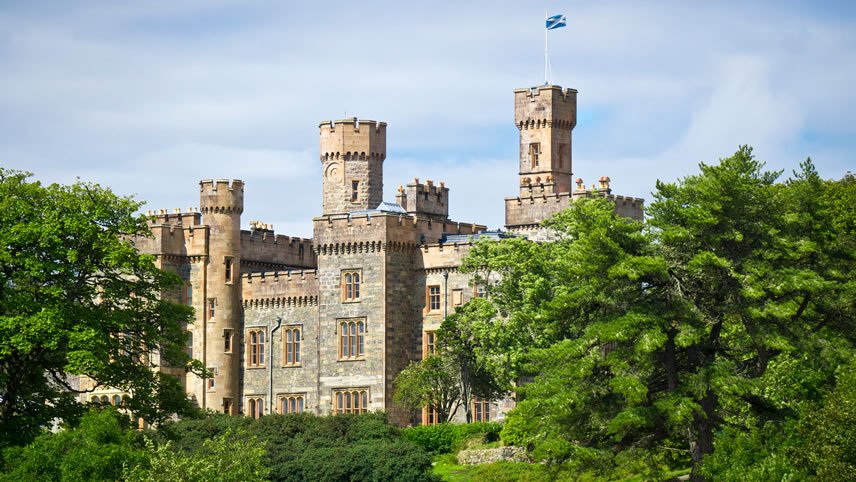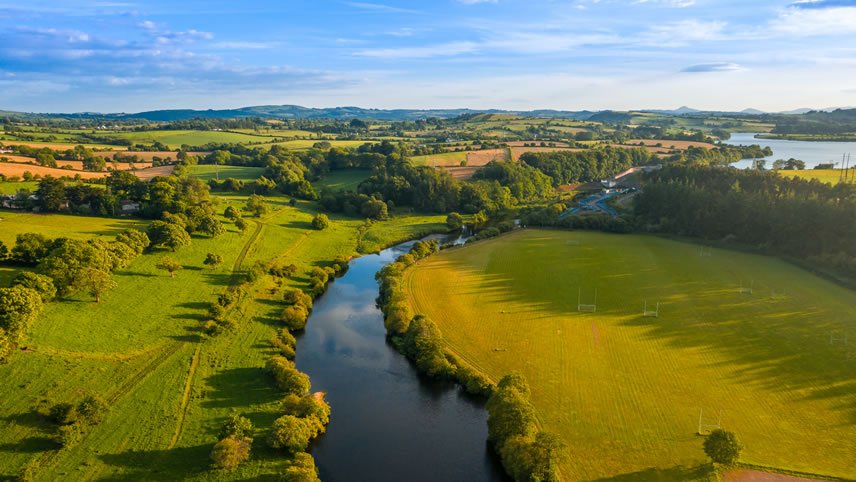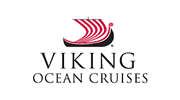Overview
Itinerary
Embark your ship and settle into your stateroom. A major port heralded for its shipbuilding heritage, Belfast has undergone a cultural and architectural renaissance unrivaled in the rest of Europe. The influence of Britain is everywhere in this polished capital of Northern Ireland. Some of its most striking buildings exude Victorian flair and cosmopolitan elegance amid its famous Irish charm. Along the Golden Mile, high-end boutiques are reminiscent of those found in Paris, and the opulent Grand Opera House stands as a hub of Belfast culture.
From an 18th-century trading town to a hub for linen, rope and tobacco production, Northern Ireland's capital has also developed a creative soul. Its galleries, impressive street art and unique urban gardens bring atmosphere to characterful neighborhoods with a unique nightlife culture. Among fine dining options and cozy pubs with folk music, some of the nation's most fascinating museums reside here too, like the Titanic Belfast which stands where the infamous ocean liner was built, offering multimedia exhibits charting the history of its creation with Belfast's evolution.
Historic Glasgow is a thriving center of arts, architecture and higher education. A university town since the 1451 founding of the University of Glasgow, it lays claim to Scotland's first public museum, the Hunterian. Nearby, the Kelvingrove Art Gallery and Museum is equally admired by visitors for its spectacular architectural interiors and its internationally significant collections. Glasgow Green, the city's oldest park, boasts the beautiful terra-cotta Doulton Fountain, while the glorious 13th-century Gothic Glasgow Cathedral is the city's crowning medieval gem.
Surrounded by majestic mountains on the banks of Loch Linnhe, Fort William is the largest town in the Scottish Highlands and the gateway to Britain's highest peak, Ben Nevis. Dotted with castle ruins, distilleries and stunning beaches amid some of Scotland's most spectacular scenery, it is also the birthplace of the ancient Clan Cameron. Donald Cameron of Lochiel, the 19th chief of Clan Cameron played a central role in the Jacobite Uprising of 1745. His statue was erected here in 1905 and stands on the Parade.
On Scotland's west coast, the Isle of Mull's seaside capital sits on a sheltered bay beneath forested hills, where legend claims a Spanish Armada ship sank in 1588. What stands today is an 18th-century fishing port with a row of brightly colored buildings lining a harbor front dotted with fishing vessels. Here, local shops selling artisan foods and crafts intersperse with art galleries and cafes. Mull is one of the best wildlife watching destinations in the British Isles, making Tobermory a starting point for many expeditions to spot rare birds, mammals, and more.
The Isle of Lewis is steeped in history and culture. Ancient standing stone circles and pristine beaches are juxtaposed with the island's quaint town of Stornoway, a unique mix of cafés, inns and boutiques featuring the work of local artisans and craftspeople. Known in Old Norse as Stjórnavágr, meaning “steering bay,” Stornoway was founded by the Vikings in the early 9th century. In the summer months, you might spy locals cutting the peat; in the winter, the distinctive dry smell of peat fires drifts in the wind; and year-round, fishermen wrangle their catch in the picturesque bay.
Northern Ireland's second-largest city has become a riverside hub for creative culture where sculptures and painted murals adorn buildings and squares, an up-and-coming food scene thrives and traditional music fills the streets from cozy pubs. History is ever present here, in ancient buildings and neo-Gothic architecture, award-winning museums and still-celebrated ancient festivals. The only completely walled city in Ireland, its 17th-century stone walls enclosing the historic city center invite exploration of their gates, watchtowers, battlements, and bastions.
Killybegs is scenically set at the foot of a harbor full of boats and trawlers. Its most notable place in history is as the final port of call for La Girona, a ship of the Spanish Armada fighting in the war against England, before she was lost off the nearby Antrim coast. Beyond the massive hauls of fish brought in and imported daily, Killybegs is further renowned for the artful Donegal Carpets that were once woven here on the world's largest carpet loom. These magnificent works—created in a Turkish hand-knotted style—were created for notable buildings the world over.
On the Emerald Isle's stunning west coast, the vibrant town of Foynes sits along an estuary of the picturesque River Shannon. Rich with maritime and aviation history, the world's first transatlantic flights operated from here and between 1939 and 1945, it was the last port of call for seaplanes making transatlantic crossings, which led to it becoming one of the largest civilian airports in Europe during the Second World War. It added the famous whiskey drink, Irish Coffee, to its list of notables too, when it was first served to passengers on a stopover in 1942.
The town of Cobh is the gateway to Cork, Ireland's second-largest city. Norse Vikings arrived in Cork around 915 AD and established a port here. During medieval times, a wall was erected around the city, portions of which still remain today. The nearby Blarney Castle, famous for the kissing stone that is said to bestow the 'gift of gab,' was also built during this time. Today, Cork is a rich and vibrant cultural center where Irish cuisine has reached new creative heights and a breathtaking array of architecture, from neoclassical to Georgian, graces the cityscape.
Situated in an Area of Outstanding Natural Beauty at the mouth of the River Fowey, this quiet British harbor town dates back to the 7th century and maintains authentic charm. Narrow streets lined with medieval buildings wind past alleyways offering glimpses of the river beyond. Pastel-colored Victorian houses mingle with riverside pubs and cafés amid boutique shops selling handmade gifts. Famous for its tradition of Cornish Cream Tea and being one of the sunniest spots in the UK, Fowey is a hidden gem, and has been an inspiration to local artists for over 100 years.
The Isle of Portland is linked to the British mainland by an 18-mile barrier beach on the southern coast of Dorset. This tiny island boasts an impressive past. Vikings first landed in England here in 789 AD. It is also home to one of the world's largest manmade harbors, which hosted the Royal Navy until 1995. Portland stone, quarried on the island, was used to build London's St. Paul's Cathedral, Buckingham Palace and other architectural marvels. And it lies on England's Jurassic Coast, a UNESCO World Heritage Site known for its unique coastal geology shaped over millennia.
Most famously known for its dramatic white-chalk towering cliffs, Dover is the nearest city to France across the English Channel. Its strategic location as a doorway into England has earned it the moniker 'Key to England.' As the port was under constant threat because of its location, the massive Dover Castle overlooking the channel grew over the centuries to become the nation's largest edifice and remains so today. Dover also served as a bastion and command center during World War II.
Greenwich, a borough of London, is home to the Royal Observatory. From here, the world's longitude is measured from the prime meridian, and Greenwich Mean Time sets the global time standard. At the port, the clipper ship Cutty Sark, one of Greenwich's renowned historic landmarks, is preserved as a fascinating museum. Upriver, London is home to Buckingham Palace, the Houses of Parliament and Westminster Abbey. In addition, this major economic and cultural hub boasts a long tradition of arts and architectural innovation—from Shakespeare's Globe Theater to West End musicals.
Bid farewell to your fellow guests and journey home. Or spend more time exploring, perhaps joining one of our extensions.
Life Onboard Viking Mars

With her maiden voyage in 2022, the Viking Mars is an all-veranda ship, part of Viking's fleet of award winning ships incorporating all the comforts & luxuries you would expect from Viking. Read more

Viking are destination experts. With no casinos or children on board, you can be assured that the focus is firmly on enrichment and education. Read more

After a day of exploration or just to enhance the relaxation of a day at sea, the on-board Spa will leave you feeling recharged and revitalized. Read more

Viking offer eight on board dining options. Beer, wine and soft drinks are available with lunch and dinner at no additional charge of fee. Read more

Viking proudly includes all that you need and nothing you do not. A variety of features and services valued at $200 per person per day are standard inclusions in your cruise. Read more

Viking include one complimentary shore excursion in every port of call. Enjoy exclusive entry to cultural treasures and seldom-seen collections around the world. Read more

Availability Click on prices below to view cabin upgrades and details
Tour & cruises prices are per person. Prices shown have savings applied, are subject to availability and may be withdrawn at any time without notice. Pricing and trip details are correct at this point in time, however are subject to confirmation at the time of booking and are subject to change by Viking. For cruise itineraries, cabin images are sourced from Viking. These should be treated as indicative only. Cabin inclusions, upholsteries and room layout may differ to the image(s) shown depending on the ship selected and your sailing dates.









